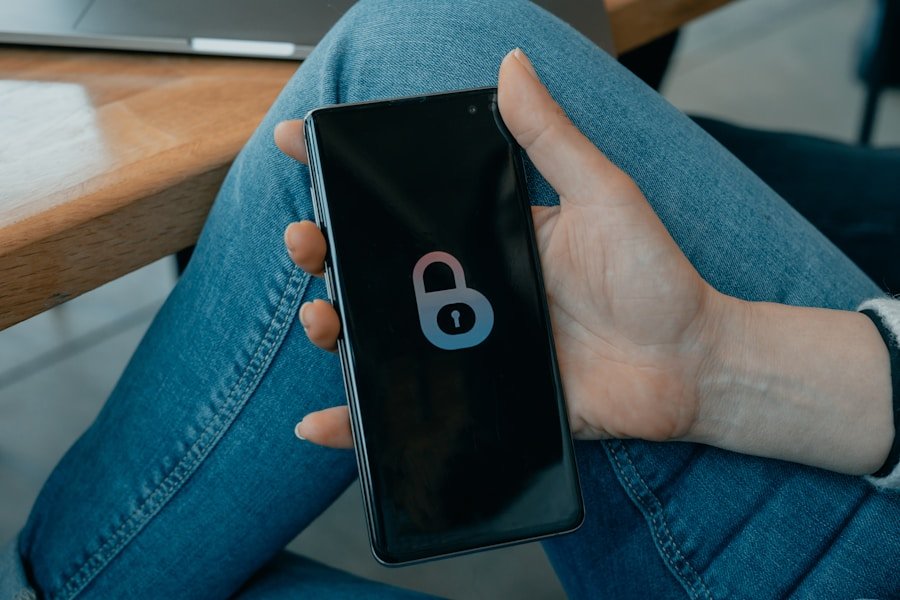In the modern digital landscape, the significance of robust passwords and two-factor authentication cannot be emphasized enough. A strong password serves as the primary defense mechanism against cyber threats. It is vital to create a password that is unique, complex, and difficult to guess, comprising a combination of uppercase and lowercase letters, numbers, and special characters.
Moreover, it is crucial to avoid using easily guessable information such as birthdays, names, or common words. Two-factor authentication provides an additional layer of security by requiring a secondary form of verification, such as a code sent to a mobile device, in addition to the password. This significantly reduces the risk of unauthorized access to accounts, even if the password is compromised.
Moreover, regular password updates and avoiding password reuse across multiple accounts are essential. This helps mitigate the risk of a single password compromise leading to unauthorized access to multiple accounts. By implementing strong passwords and two-factor authentication, individuals can substantially enhance their protection against cyber threats.
Key Takeaways
- Use strong passwords and enable two-factor authentication for added security
- Regularly update and patch software to fix vulnerabilities and prevent cyber attacks
- Be aware of phishing and social engineering tactics to avoid falling for scams
- Utilize Virtual Private Networks (VPNs) to encrypt internet connections and protect data
- Securely backup and store data to prevent loss in case of a cyber attack or hardware failure
Regular Software Updates and Patching
Why Software Updates are Crucial
Regular software updates and patching are essential for protecting against cyber threats. Software updates often include security patches that address vulnerabilities and weaknesses that could be exploited by cybercriminals. Failing to update software leaves systems and devices vulnerable to attacks.
The Evolving Nature of Cyber Threats
Cybercriminals are constantly evolving their tactics, and software developers are continually working to identify and address new vulnerabilities. Therefore, it is crucial for individuals to regularly update their operating systems, applications, and antivirus software to ensure that they are protected against the latest threats.
The Importance of Patching Known Vulnerabilities
In addition to updating software, it is important to regularly patch any known vulnerabilities. This involves applying updates or fixes provided by software vendors to address specific security issues. Failure to patch known vulnerabilities can leave systems and devices open to exploitation. By staying vigilant and regularly updating software and patching known vulnerabilities, individuals can significantly reduce their risk of falling victim to cyber threats.
Awareness of Phishing and Social Engineering
Phishing and social engineering are common tactics used by cybercriminals to trick individuals into divulging sensitive information or performing actions that compromise their security. Phishing typically involves fraudulent emails, messages, or websites that appear to be from legitimate sources, such as banks or government agencies, in an attempt to obtain personal information such as login credentials or financial details. Social engineering involves manipulating individuals into divulging sensitive information or performing actions that compromise their security through psychological manipulation.
To protect themselves from these threats, individuals must be vigilant and skeptical of unsolicited communications or requests for personal information. It is important to verify the legitimacy of any requests for sensitive information before providing it. This can be done by contacting the organization directly through official channels to confirm the request’s authenticity.
Additionally, individuals should be cautious when clicking on links or downloading attachments from unknown sources, as these could be malicious. By being aware of phishing and social engineering tactics and exercising caution when interacting with unknown sources, individuals can protect themselves from falling victim to these types of cyber threats.
Use of Virtual Private Networks (VPNs)
| Protection Measure | Description |
|---|---|
| Use strong passwords | Create unique passwords with a combination of letters, numbers, and special characters. |
| Enable two-factor authentication | Add an extra layer of security by requiring a second form of verification to access accounts. |
| Keep software updated | Regularly update operating systems, applications, and antivirus software to patch vulnerabilities. |
| Avoid clicking on suspicious links | Be cautious of unsolicited emails and links from unknown sources to prevent phishing attacks. |
| Use a virtual private network (VPN) | Encrypt internet traffic and protect sensitive data when using public Wi-Fi networks. |
| Backup important data | Regularly backup files and data to prevent loss in case of a cyber attack or system failure. |
A Virtual Private Network (VPN) is a crucial tool for protecting against cyber threats, especially when using public Wi-Fi networks. VPNs encrypt internet traffic and route it through a secure server, making it difficult for cybercriminals to intercept and access sensitive information. This is particularly important when using public Wi-Fi networks, which are often unsecured and vulnerable to interception by malicious actors.
In addition to providing encryption and security, VPNs also offer anonymity by masking the user’s IP address and location. This helps to protect privacy and prevent tracking by third parties. By using a VPN, individuals can significantly enhance their online security and privacy, especially when accessing the internet from public Wi-Fi networks or other potentially insecure connections.
Secure Data Backup and Storage
Data backup and storage are essential for protecting against data loss due to cyber threats such as ransomware or hardware failure. Regularly backing up important files and data ensures that they can be recovered in the event of a cyber attack or system failure. It is important to store backups in a secure location, such as an external hard drive or cloud storage service, to prevent loss due to physical damage or theft.
In addition to regular backups, it is important to implement secure data storage practices to protect against unauthorized access. This includes encrypting sensitive data and using strong access controls to limit who can access it. By implementing secure data backup and storage practices, individuals can mitigate the impact of cyber threats on their important files and information.
Implementation of Firewalls and Antivirus Software
Firewalls and antivirus software are essential tools for protecting against cyber threats such as malware, viruses, and other malicious software. Firewalls act as a barrier between a trusted internal network and untrusted external networks, monitoring and controlling incoming and outgoing network traffic based on predetermined security rules. This helps to prevent unauthorized access and protect against network-based attacks.
Antivirus software is designed to detect, prevent, and remove malicious software from computers and devices. It scans files and programs for known patterns of malicious behavior and alerts users to potential threats. By regularly updating antivirus software and running scans on a regular basis, individuals can protect their devices from malware and other cyber threats.
In conclusion, protecting against cyber threats requires a multi-faceted approach that includes strong passwords and two-factor authentication, regular software updates and patching, awareness of phishing and social engineering tactics, use of VPNs, secure data backup and storage practices, implementation of firewalls and antivirus software, and safe internet browsing practices. By implementing these measures, individuals can significantly enhance their protection against cyber threats and reduce their risk of falling victim to malicious actors online. It is important for individuals to stay informed about the latest cyber threats and best practices for protecting themselves in an increasingly digital world.
FAQs
What are cyber threats?
Cyber threats are malicious attempts to damage, disrupt, or gain unauthorized access to computer systems, networks, or digital devices.
How can individuals protect themselves from cyber threats?
Individuals can protect themselves from cyber threats by using strong, unique passwords, keeping their software and operating systems up to date, being cautious of suspicious emails and links, using antivirus software, and being mindful of the information they share online.
Why is it important to protect oneself from cyber threats?
It is important to protect oneself from cyber threats because cyber attacks can lead to identity theft, financial loss, and damage to personal and professional reputation. Additionally, cyber threats can also compromise the security and privacy of personal and sensitive information.











